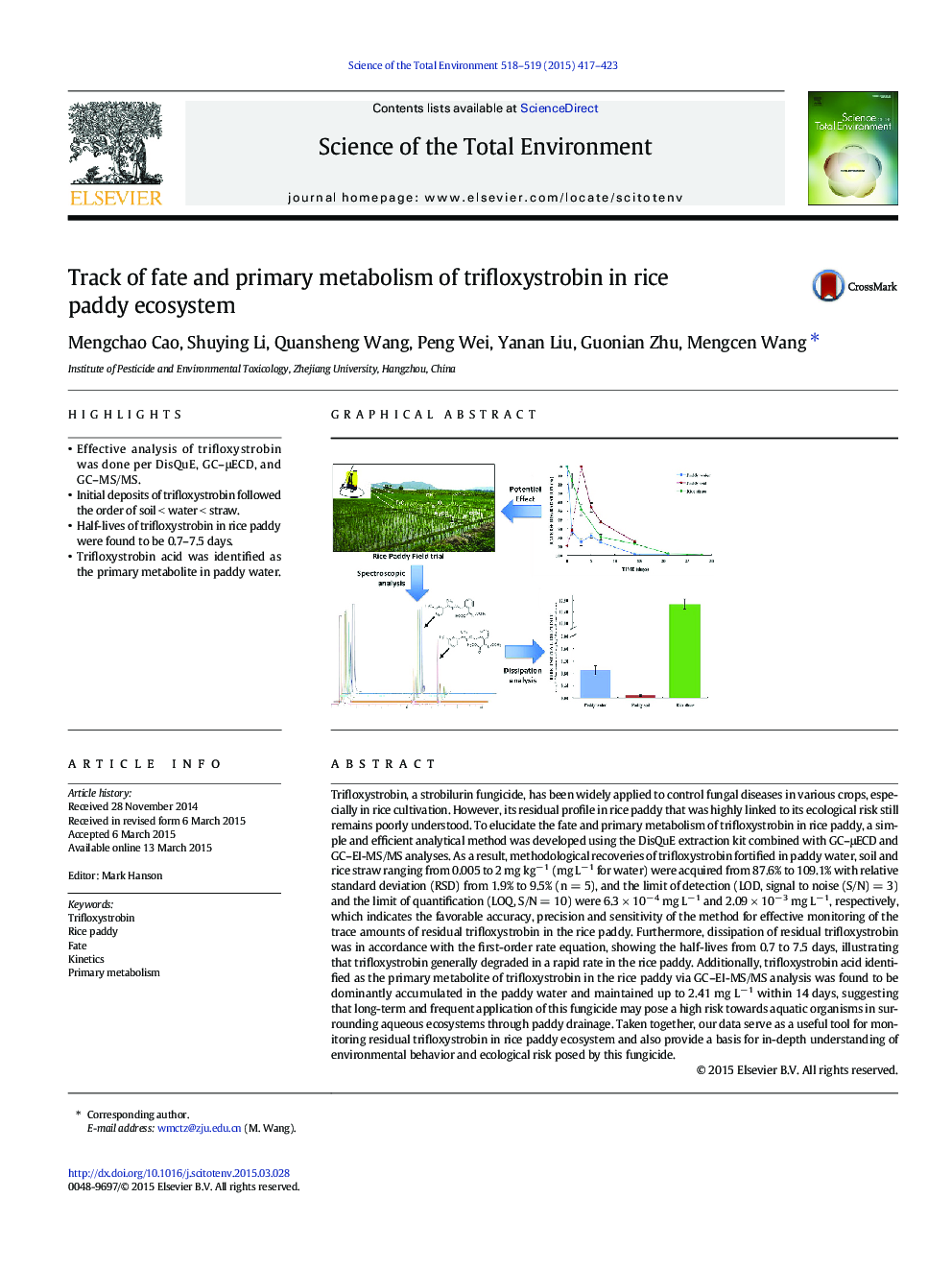| Article ID | Journal | Published Year | Pages | File Type |
|---|---|---|---|---|
| 6326887 | Science of The Total Environment | 2015 | 7 Pages |
â¢Effective analysis of trifloxystrobin was done per DisQuE, GC-μECD, and GC-MS/MS.â¢Initial deposits of trifloxystrobin followed the order of soil < water < straw.â¢Half-lives of trifloxystrobin in rice paddy were found to be 0.7-7.5 days.â¢Trifloxystrobin acid was identified as the primary metabolite in paddy water.
Trifloxystrobin, a strobilurin fungicide, has been widely applied to control fungal diseases in various crops, especially in rice cultivation. However, its residual profile in rice paddy that was highly linked to its ecological risk still remains poorly understood. To elucidate the fate and primary metabolism of trifloxystrobin in rice paddy, a simple and efficient analytical method was developed using the DisQuE extraction kit combined with GC-μECD and GC-EI-MS/MS analyses. As a result, methodological recoveries of trifloxystrobin fortified in paddy water, soil and rice straw ranging from 0.005 to 2 mg kgâ 1 (mg Lâ 1 for water) were acquired from 87.6% to 109.1% with relative standard deviation (RSD) from 1.9% to 9.5% (n = 5), and the limit of detection (LOD, signal to noise (S/N) = 3) and the limit of quantification (LOQ, S/N = 10) were 6.3 Ã 10â 4 mg Lâ 1 and 2.09 Ã 10â 3 mg Lâ 1, respectively, which indicates the favorable accuracy, precision and sensitivity of the method for effective monitoring of the trace amounts of residual trifloxystrobin in the rice paddy. Furthermore, dissipation of residual trifloxystrobin was in accordance with the first-order rate equation, showing the half-lives from 0.7 to 7.5 days, illustrating that trifloxystrobin generally degraded in a rapid rate in the rice paddy. Additionally, trifloxystrobin acid identified as the primary metabolite of trifloxystrobin in the rice paddy via GC-EI-MS/MS analysis was found to be dominantly accumulated in the paddy water and maintained up to 2.41 mg Lâ 1 within 14 days, suggesting that long-term and frequent application of this fungicide may pose a high risk towards aquatic organisms in surrounding aqueous ecosystems through paddy drainage. Taken together, our data serve as a useful tool for monitoring residual trifloxystrobin in rice paddy ecosystem and also provide a basis for in-depth understanding of environmental behavior and ecological risk posed by this fungicide.
Graphical abstractDownload full-size image
